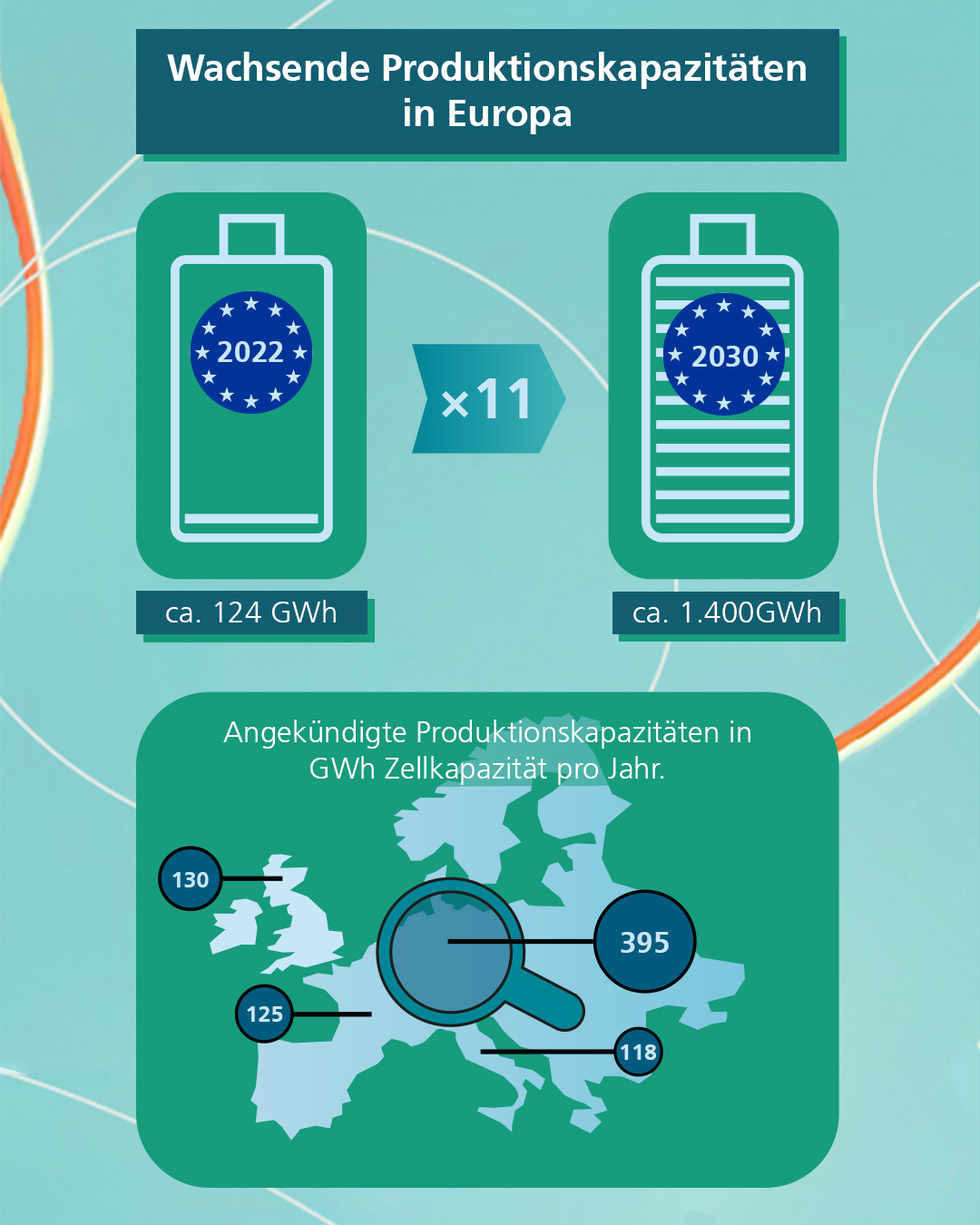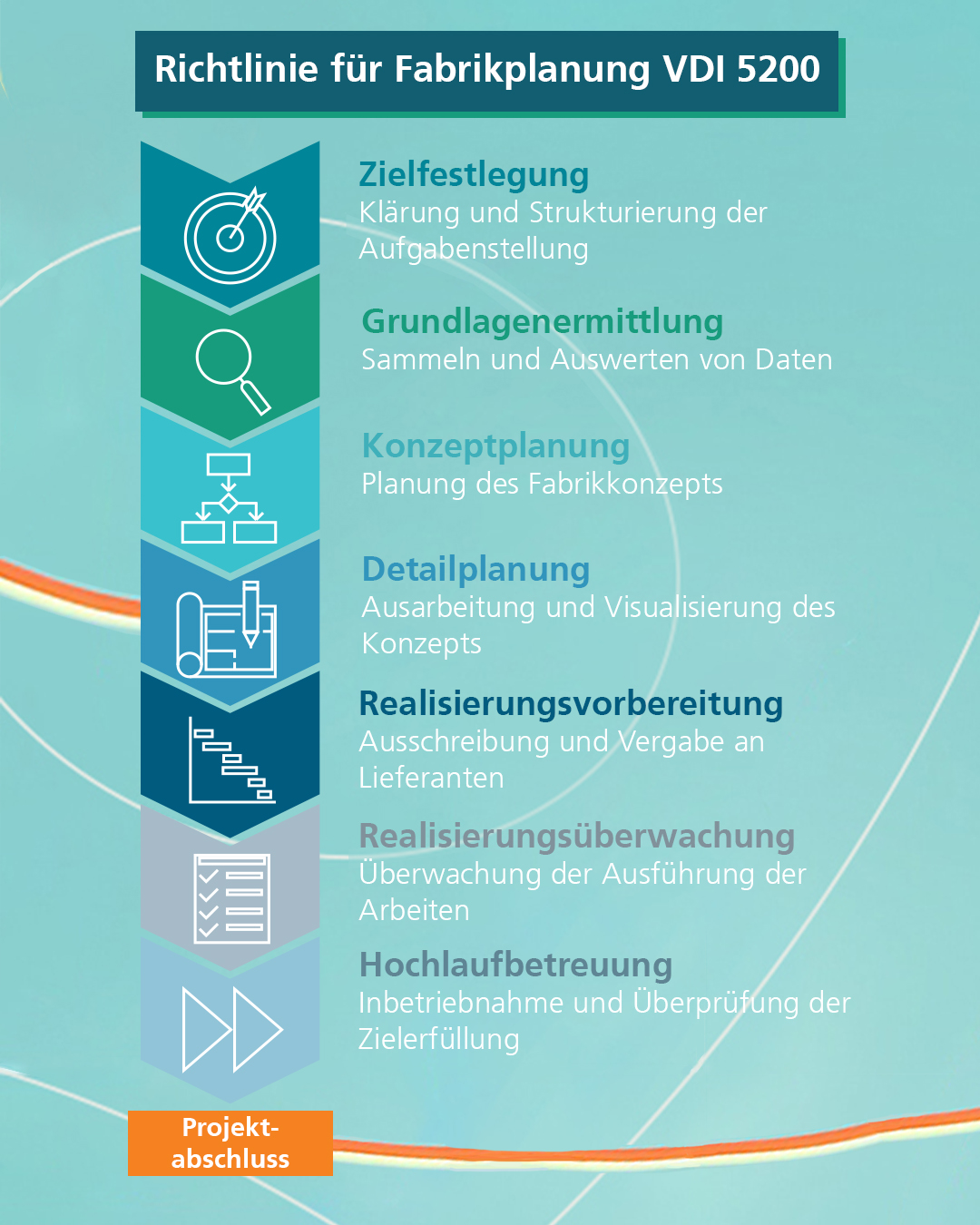Factory planning according to the VDI 5200 guideline
If you want to set up a battery cell production facility on a greenfield site, you first need to know the complex conditions that logistics, energy requirements, quality, and cost-effectiveness place on production. The availability of (renewable) energy also plays a role in the choice of location. Fraunhofer FFB bases its own and external planning projects on Guideline 5200 of the Association of German Engineers (VDI 5200), a holistic model that uses interdisciplinary methods from architecture, technical building equipment, and fire protection, among others. The guideline proposes a procedure in seven phases:
1. target definition
In the first phase, factory planning tasks and factory objectives are defined together with the company in compliance with the project framework conditions.
2. basic determination
The baseline assessment consists of an analysis of the entire initial situation using data and simulation tools. Here, the feasibility is checked based on reliable data.
3. concept planning
In the third phase, a factory concept is drawn up together with the company that best meets the defined factory objectives. Starting from an ideal layout, real physical conditions such as buildings, land, and technical equipment are developed into a rough layout that takes logistics and material flow concepts into account.
4. detailed planning
In the detailed planning phase, the rough layout is further developed in its subtleties. The detailed layout incorporates work processes, adaptability, and efficient use of space into the concept.
5. preparation for realization
The preparatory phase before the realization of the construction includes the preparation of a cost plan.
6. realization monitoring
Parallel to implementation, realization monitoring is carried out to ensure proper implementation of the concept and adherence to time and cost plans.
7. ramp-up support
Finally, the completed factory is ramped up to the specified performance level. During the so-called "ramp-up", the target achievement is checked.


